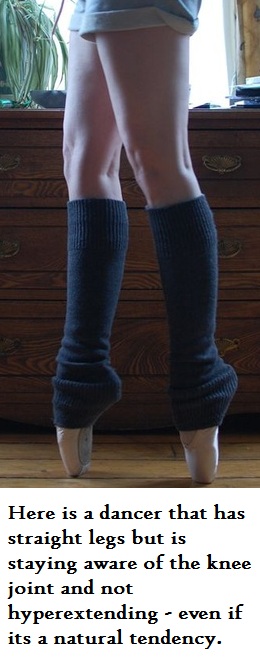Another important issue with the knee joint are those people who have a naturally hyperextended knee joint. In a yoga practice there is no healthy reason to ever have the knee in hyperextention and plenty of reasons to avoid it.
The body works efficiently when everything is in alignment and if a joint naturally hyperextends, then things are out of balance and there will be compensations up and down the body. For the knee it can lead to lordosis and over-development of the muscles of the legs and again, its just not an efficient use of the body skeleton and muscles.
So the bottom line for a yoga teacher is that we want to help students identify if they have a natural knee hyperextension and then encourage everyone to have easy and straight alignment from the ankle to the hips.
The assessment is easy to see for the teacher and student. If the student is comfortable, have her roll up pants so she can see the knee. Then straighten and lock the knee joint back. This means pressing the knee cap back in what most people know as “locking the knee.” It should be easy to see if the leg forms a straight line or if the joint is angled beyond normal.
Even for most students who have a straight and normal range of motion in the knee joint, its not useful or optimal for them to ever lock the knee or push the knee joint back fully. So every student needs to be verbally guided in how to properly use the legs in standing postures to get the best and most efficient use of the legs and knees.
As we work with the postures mountain, triangle, standing balances, forward fold and warrior 3 we will look at some word pictures and verbal instructions that will help students to understand the feeling of straight and stable legs without locking or hyperextending the knees.


